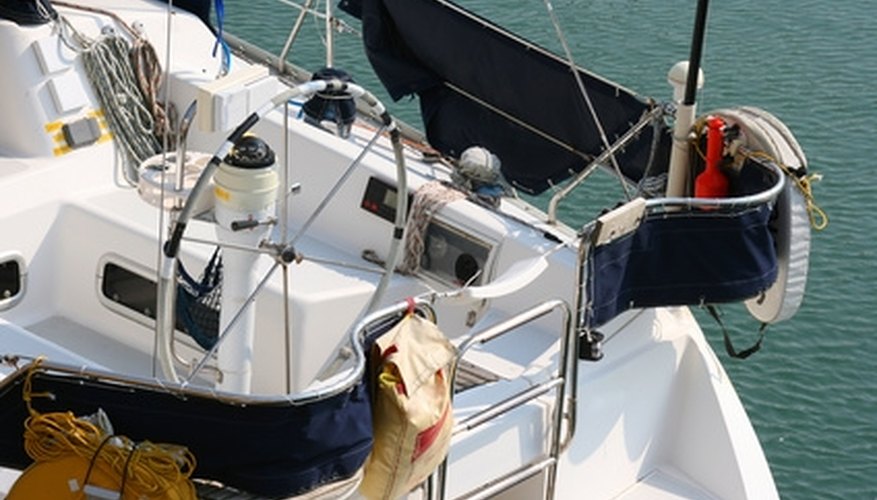
High-quality magnetic compasses like those made by Ritchie Navigation are an essential component on any boat. A properly adjusted compass can provide safe navigation even while more complex equipment such as a Global Position System receiver can break down. A poorly adjusted compass, however, can quickly lead a boat off course and into danger. Adjustment, or compensation of a compass is necessary due to the boat’s metal fixtures and electrical circuits, which can interfere with the compass’s ability to align itself with the earth’s magnetic field. Adjusting the device is not complicated, but requires some planning and patience to do correctly.
Items you will need
Navigational chart
GPS receiver (optional)
Mount the compass in its intended location in the boat, but do not permanently secure it. It may be necessary to rotate it during the adjustment process. Make sure any metal objects near the compass are secure in their normal, seagoing position. Note the two compensating magnet adjustment rods on the compass. (On some models, black plastic caps must be removed to gain access to the adjusting rods.) The slots on these adjusting rods should be in their horizontal or neutral position.
Identify two sets of landmarks on the chart: one set aligned as closely as possible (within 10 degrees) of a magnetic north and south line, the other aligned east and west. These work best if the boat can be maneuvered “downrange” of the two landmarks, so you can line up the two marks visually while navigating along the line. If a GPS is available while you're under way, it can be used instead of a chart to line up with a landmark along a magnetic north/south or east/west line.
Line the boat up along the north/south line you have identified and run it toward the north. Adjust the port/starboard compensator until the compass reads exactly north.
Reverse course and run the boat due south along the same line. If the compass does not read correctly, do not adjust the compensator, but rotate the compass itself enough to remove one half of this error (called an alignment error.) Reverse course again and repeat Step 3, and then repeat this step until the compass reads correctly in both northerly and southerly directions.
Perform the same series of steps along the east/west line, adjusting the fore/aft compensator to point the compass due east or west when you are running in that direction. At this stage, any alignment error should have been removed in the previous steps, so rotating the compass should not be necessary.
Secure the compass in place after it reads accurately when running north, south, east and west. As long as nothing changes on the boat (such as adding another piece of equipment near the compass), the compass should remain accurate. It is a good idea to check the compensation accuracy once a year.
Tips
- Due to possible magnetic variations of your boat, it is a good idea to check the accuracy of the compass at every 30 degrees of heading. Record any deviation on a deviation card so the helmsman can make corrections when navigating.
- Remember that your compass points to magnetic north, which varies from true north depending on your location. This is called variance or declination. The National Oceanic and Atmospheric Administration offers a convenient Web page to help you determine the degree of variance in your area (see Resources).
References
Tips
- Due to possible magnetic variations of your boat, it is a good idea to check the accuracy of the compass at every 30 degrees of heading. Record any deviation on a deviation card so the helmsman can make corrections when navigating.
- Remember that your compass points to magnetic north, which varies from true north depending on your location. This is called variance or declination. The National Oceanic and Atmospheric Administration offers a convenient Web page to help you determine the degree of variance in your area (see Resources).
Writer Bio
Mike Frees is an I.T. professional who was first published in the Apollo Computer corporate journal in the 1980s. He has since seen print in fiction magazines, local newspapers and nonprofit newsletters, and has been writing online articles for the past year. He has a bachelor's degree from San Jose State University and a master's degree from the College of Notre Dame.



